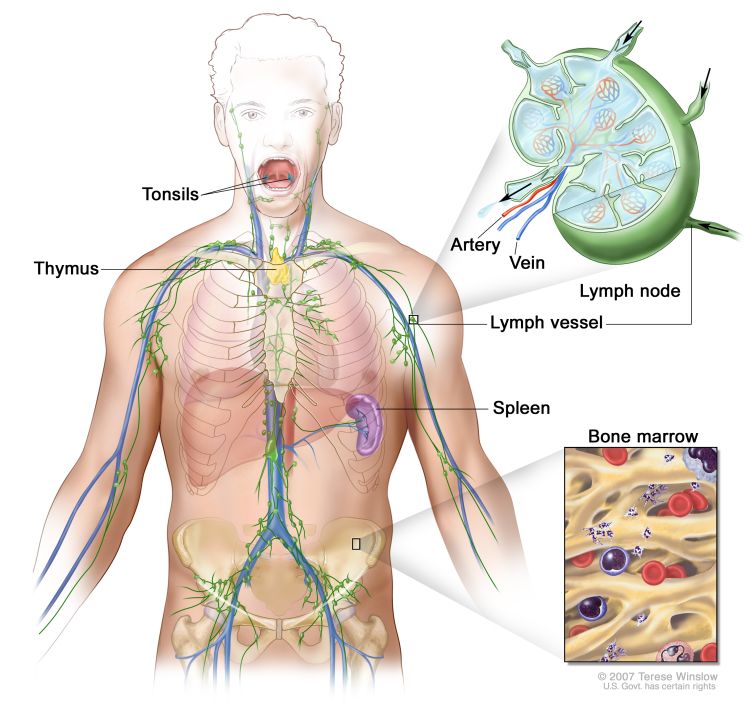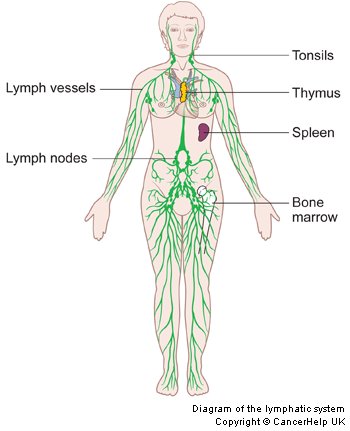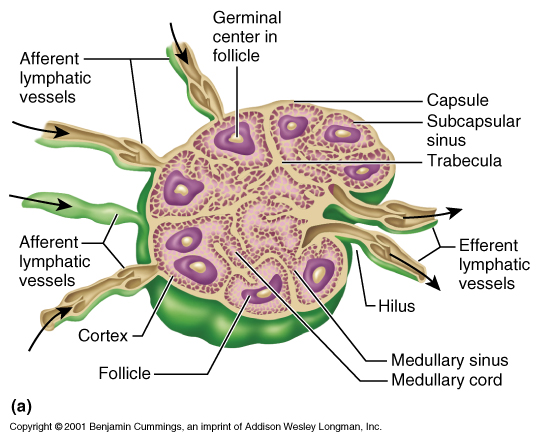
When our immunity gets lower, we become more exposed to a series of health conditions, and most of the times we blame our diet or inadequate rest schedule for our immunity problems.
If we wake up with a sore throat or suffer from frequent episodes of cold or flu, we blame the weather or the lack of vitamins from our diet, when in fact these problems, just like the excess fluid retention that causes swelling and pain of the feet and ankles, might be caused by the blockage of lymph nodes.

These small, bean-shaped glands are spread throughout the body and are connected by lymph vessels, forming the lymphatic system. The main role of this system is to protect the body against ailments, as part of the immune system, and to transport the lymph, just like the cardiovascular system carries the blood.
Here’s how the lymphatic system works: as blood circulates throughout the body, it leaks out from the blood vessels into the tissues, providing the cells with nutrients and transporting toxins as well. From tissues, the leaked fluid drains into the lymph vessels, which transport the liquid to the lymph nodes. Here, lymph is filtered and white cells kill all viruses and bacteria found in lymph, then the cleared lymph is emptied back into the bloodstream.
The lymphatic system works continuously, but unlike the cardiovascular one, it has no pump to push the fluid faster through the vessels, or to ensure a proper lymph circulation. Still, it’s not composed only of nodes and vessels – the spleen, thymus, tonsils and adenoids are also parts of the lymphatic system, each of them having their role in draining the lymph and removing bacteria and toxins from the body.
Back to lymph nodes: these are located in several regions, some of them being closer to the skin’s surface – nodes in armpits, groin and neck area, while some are found in the chest, abdomen and pelvis regions. Nodes look like tiny olives, and can’t be felt with your hands, except for those located in the armpits, neck and groin area, which can be easily identified when they get swollen.

Nodes get swollen when there’s an injury, an infection or a tumour growing near the lymph node’s location. The swelling is caused by excessive production of infection-fighting white blood cells, as a response to the presence of the pathogens, or by the accumulation of toxins. Certain medicines can also lead to swollen lymph nodes, other potential triggers for this condition being mononucleosis (infection caused by the Epstein-Barr virus), AIDS and syphilis.
When the nodes remain obstructed for longer periods, they can lead to lymphedema, a condition which requires medical intervention. Symptoms of lymphedema include swelling of the arms, fingers, legs, chest or shoulders, a sensation of heaviness, skin tightness, decreased flexibility in the affected area and tight-fitting watches, bracelets or clothes.
Getting adequate treatment for this condition is crucial, as left untreated lymphedema can prevent oxygen from reaching the tissues, and can seriously alter the body’s immune function and healing ability. Lymphatic drainage massage is perhaps the best thing you can do to help yourself until you see your doctor, and it’s a form of self-therapy you should regularly receive for the proper functioning of the lymphatic system.
Although manual massage performed by a specialist is the best, you can still benefit from this form of massage at home, either by learning the technique or by stepping on your whole body vibration machine and allowing it to enhance the circulation of lymph throughout your body. You can read more on how WBV helps with lymphatic drainage here.
As for manual massage, it’s been proven to help to increase the lymph flow by up to 20 times, so it’s definitely a technique that can boost your immunity, helping the body fight against pathogens and flush out toxins more efficiently. Moreover, lymphatic drainage massage can speed up the recovery from various ailments, and can increase your energy levels by ensuring a healthier delivery of nutrients to cells and a cleaner blood composition.
Since some of the lymph nodes are located near the skin’s surface, it’s important not to apply too much pressure when massaging the swollen areas. Movements should be gentle, to help to move the lymph along the body in specific directions, and drain out the fluids from tissues. Although very helpful in relieving numerous ailments, lymphatic drainage massage is not only for ill people.
Anyone who wants to get rid of puffy and swollen tissues, to improve their immune function, aid in the removal of toxins, reduce the appearance of cellulite, prevent skin redness, spider veins and acne, or simply encourage the lymph blow in the body, for an overall improved health state, should receive this form of massage regularly.
Share your thoughts on this topic with our Facebook community!

Updated on: 08.09.2021 The lymphatic system is involved not only...

Stress can make you gain weight – we’ve heard this...

Various theories exist to answer this question. As you will...

Our series of whole body vibration machine exercise articles continues...

Both rebounding and jumping on a trampoline are excellent ways...